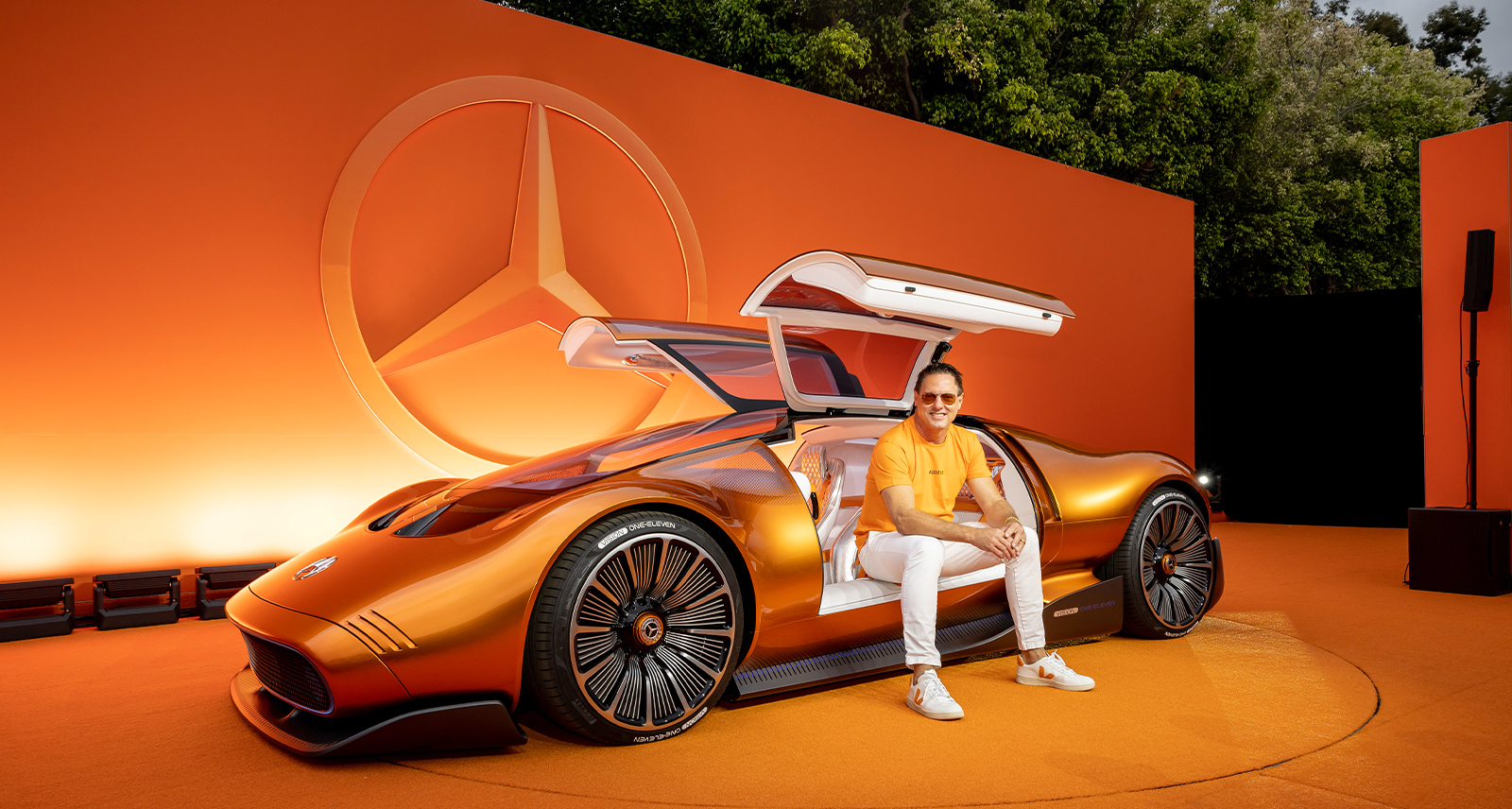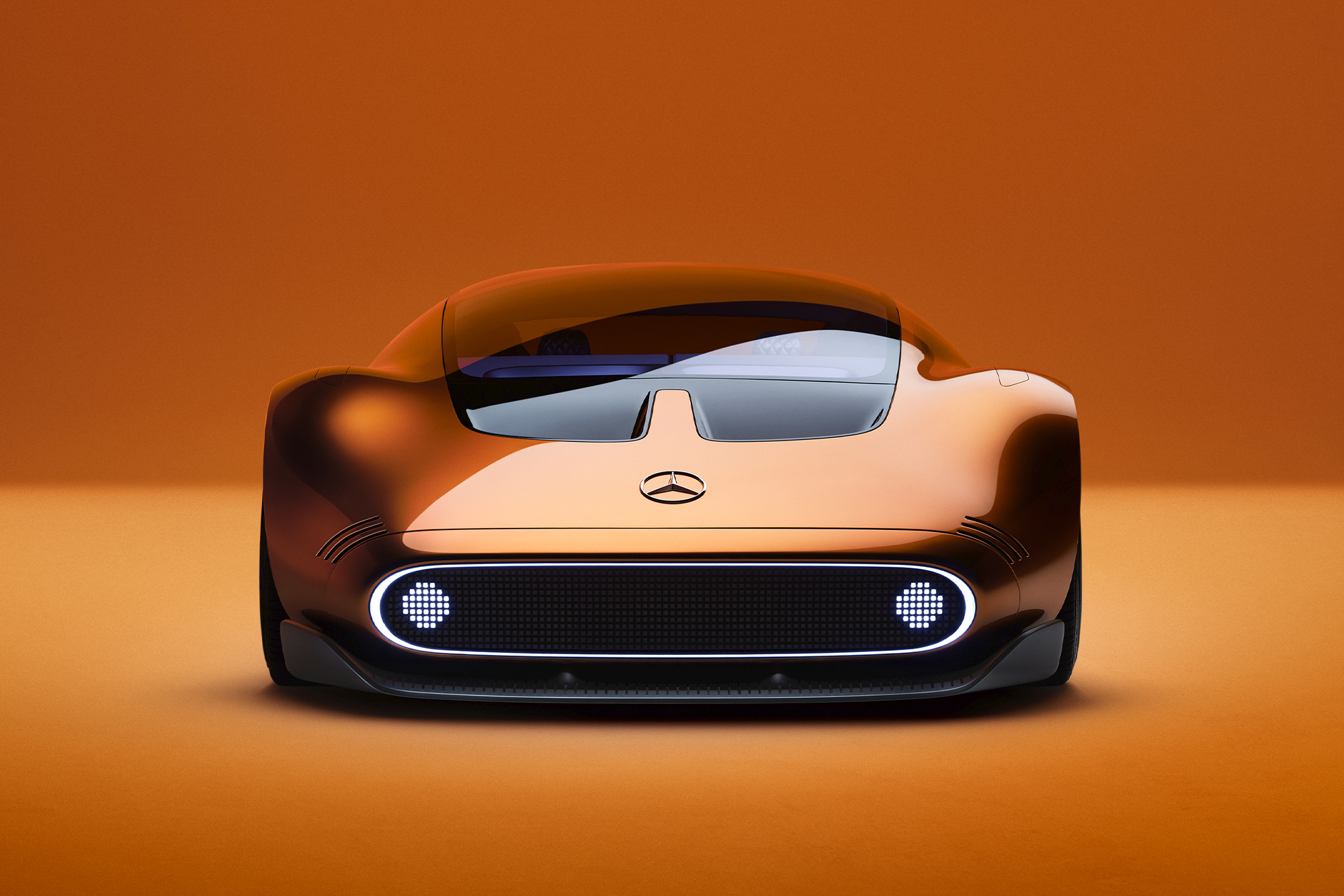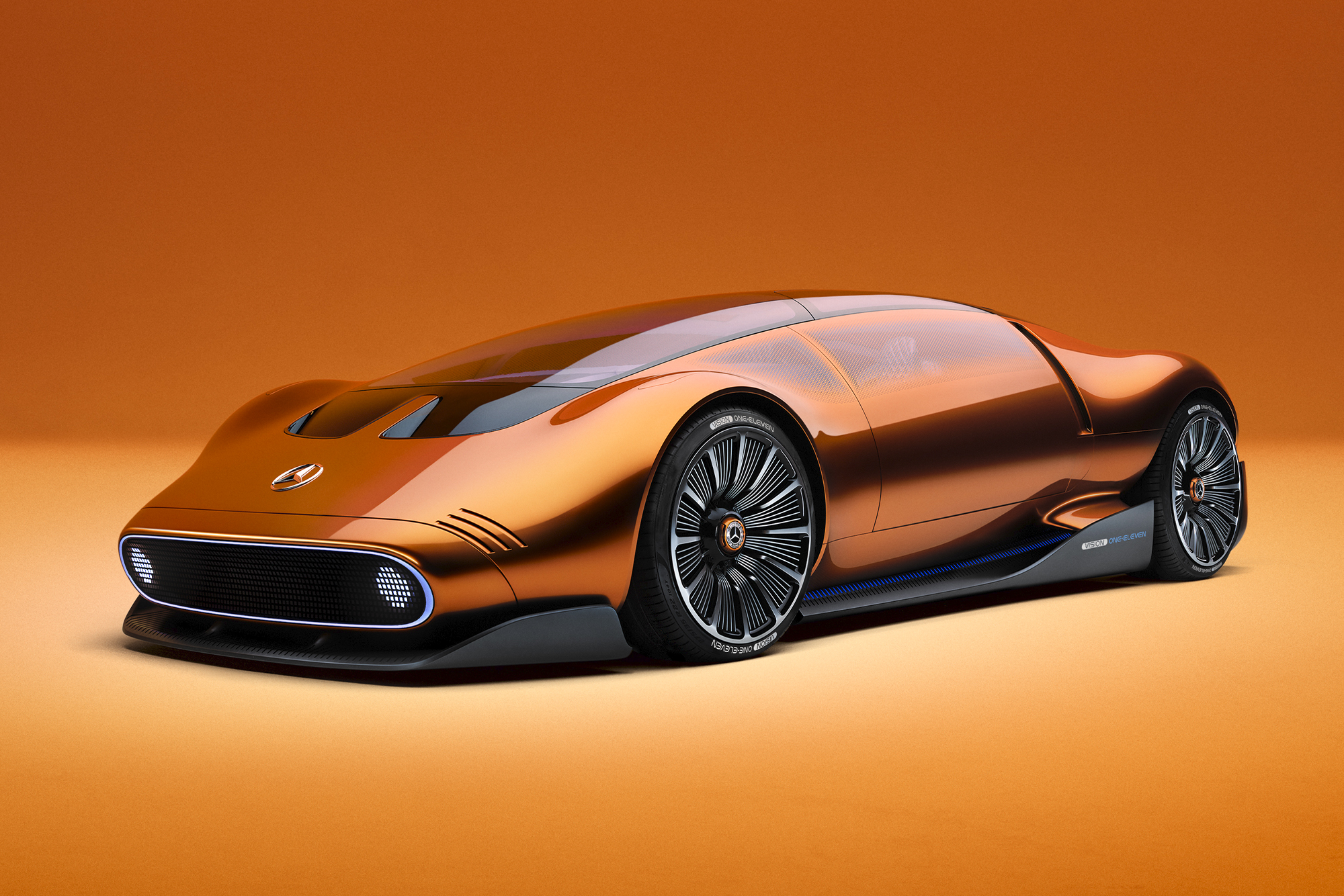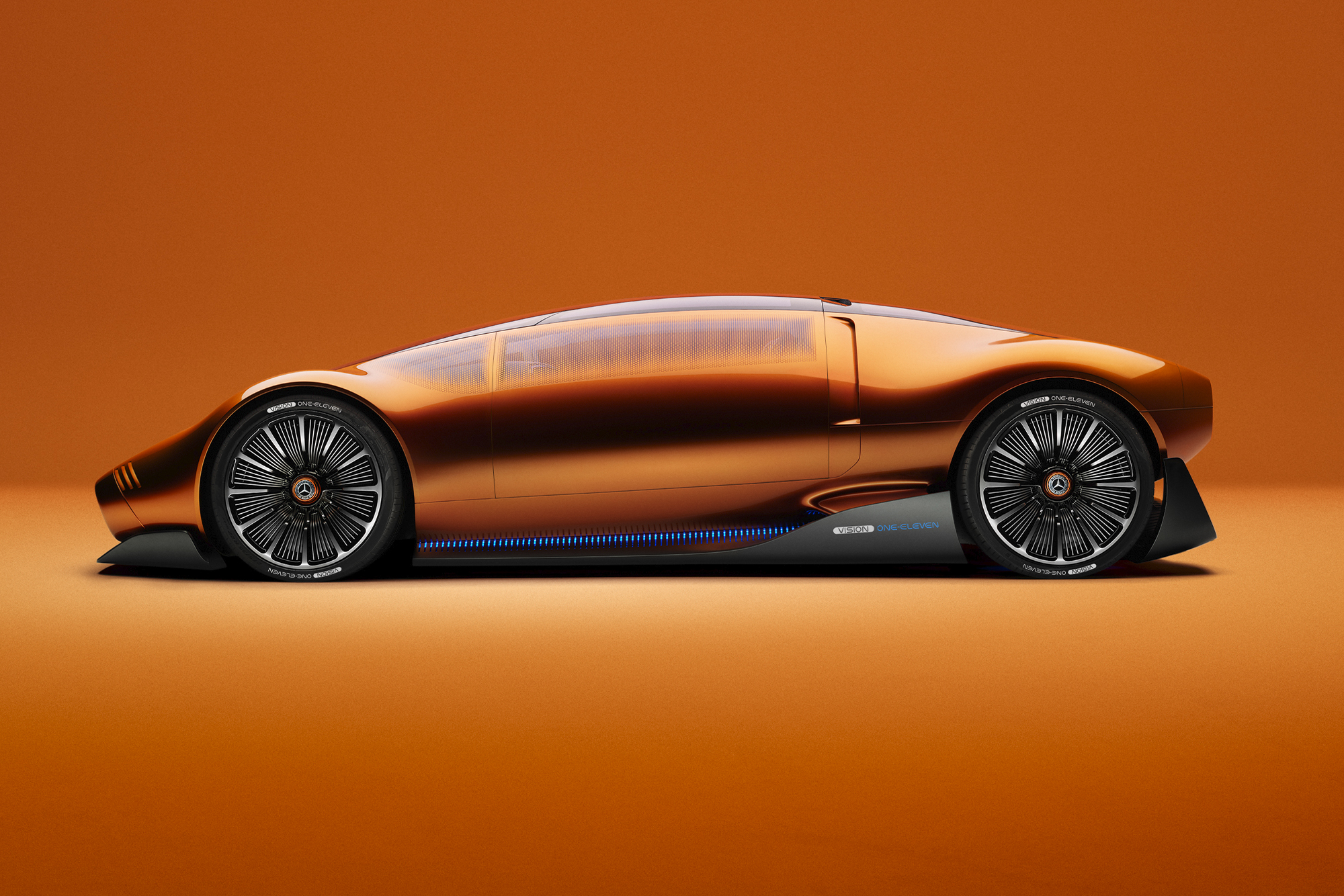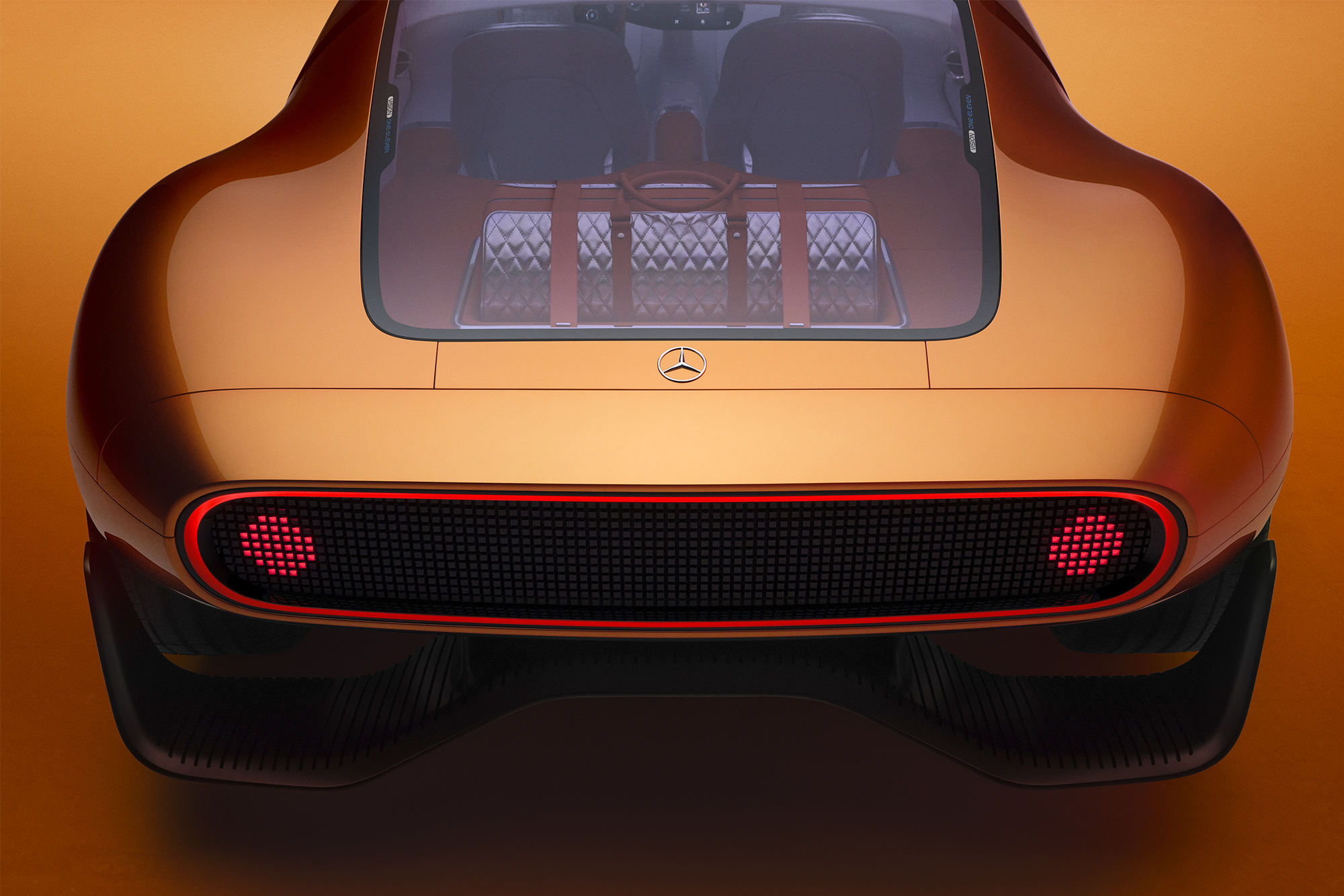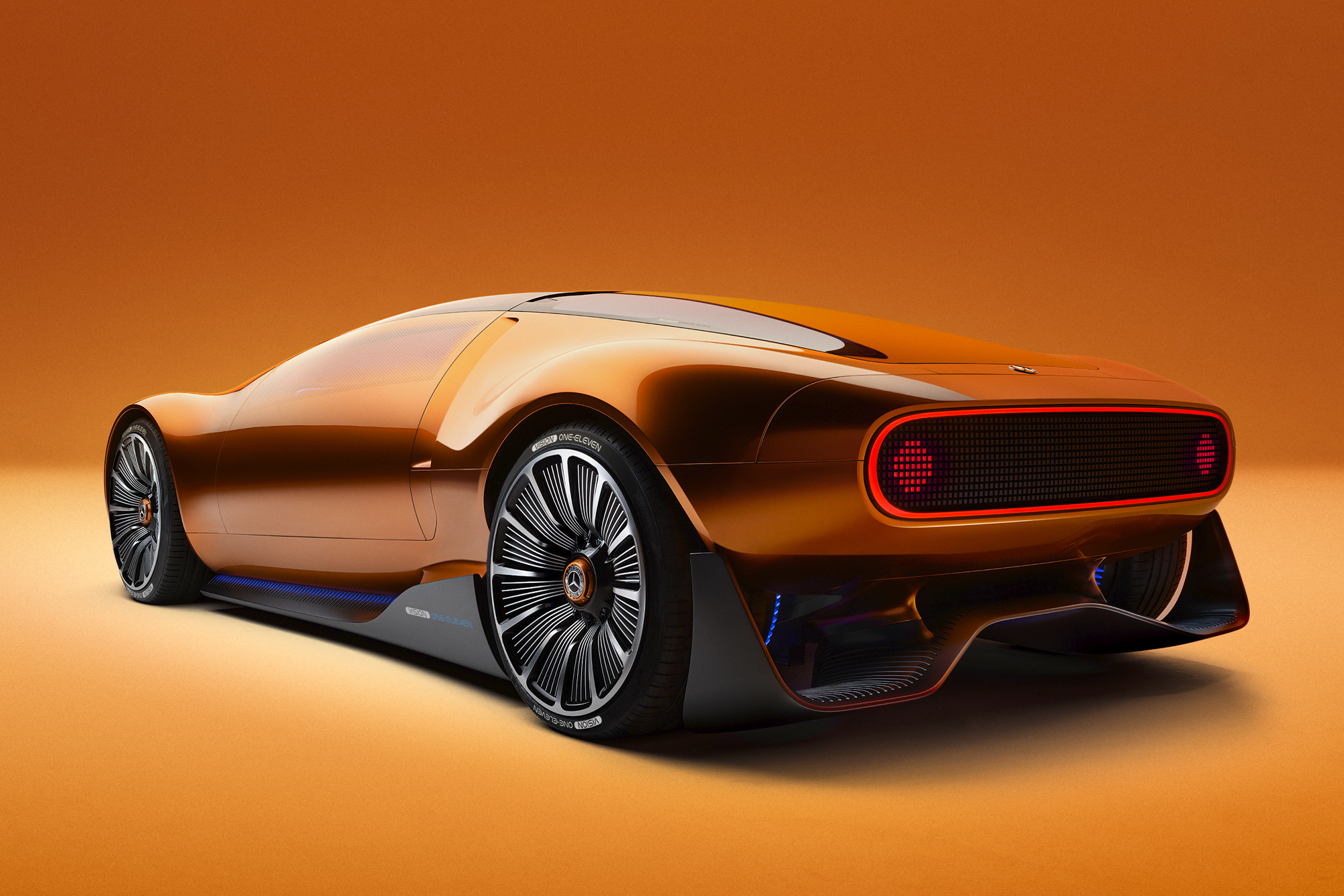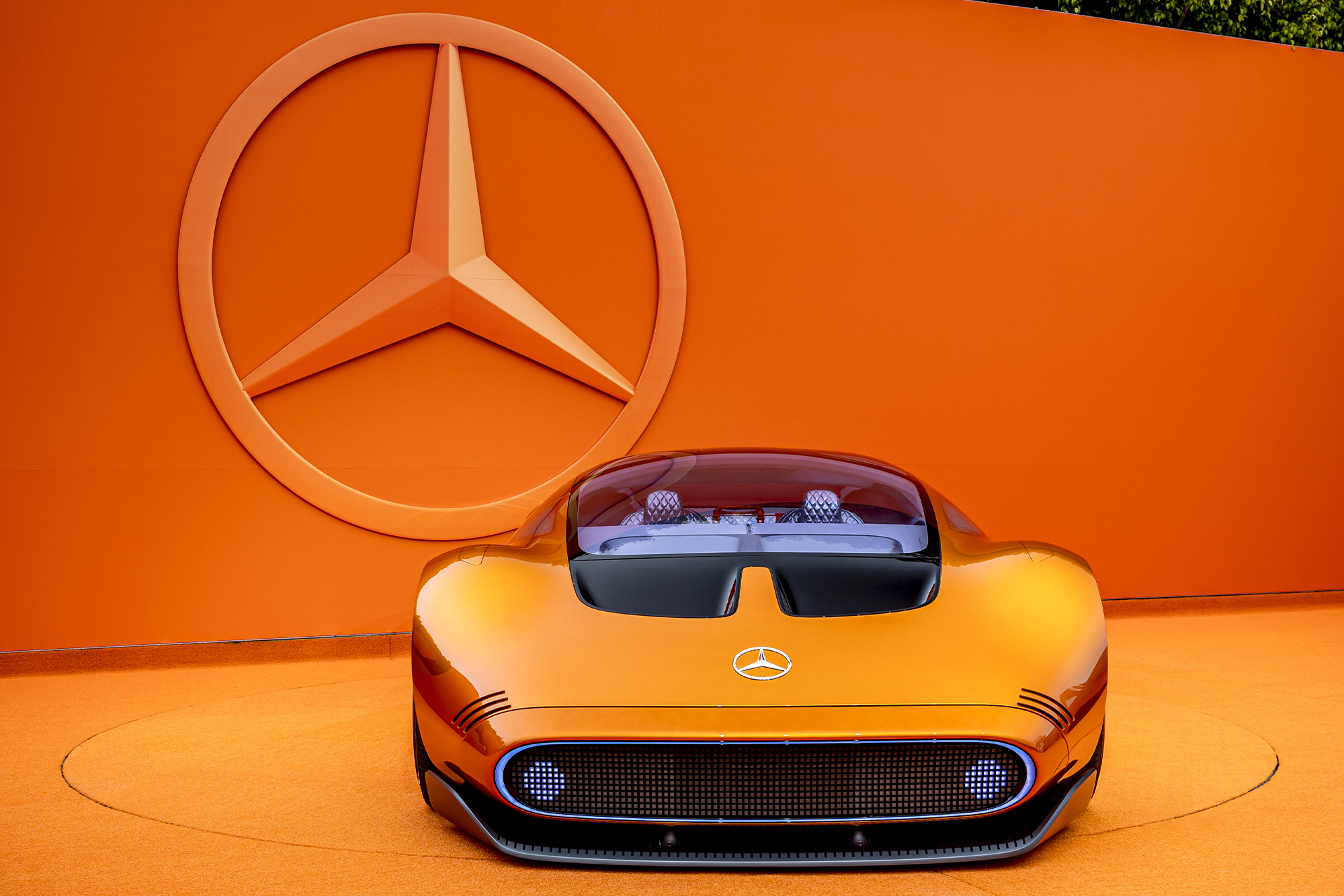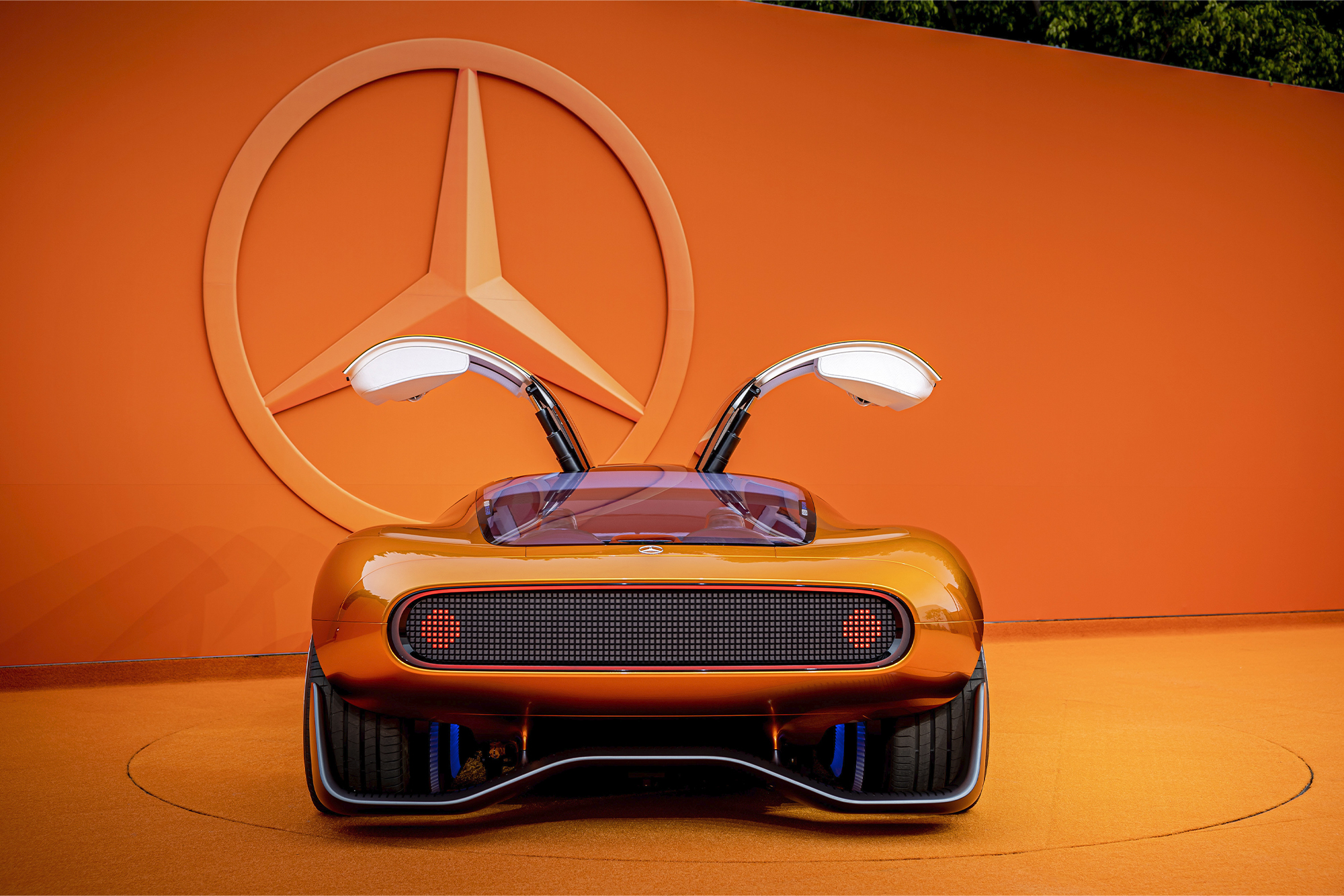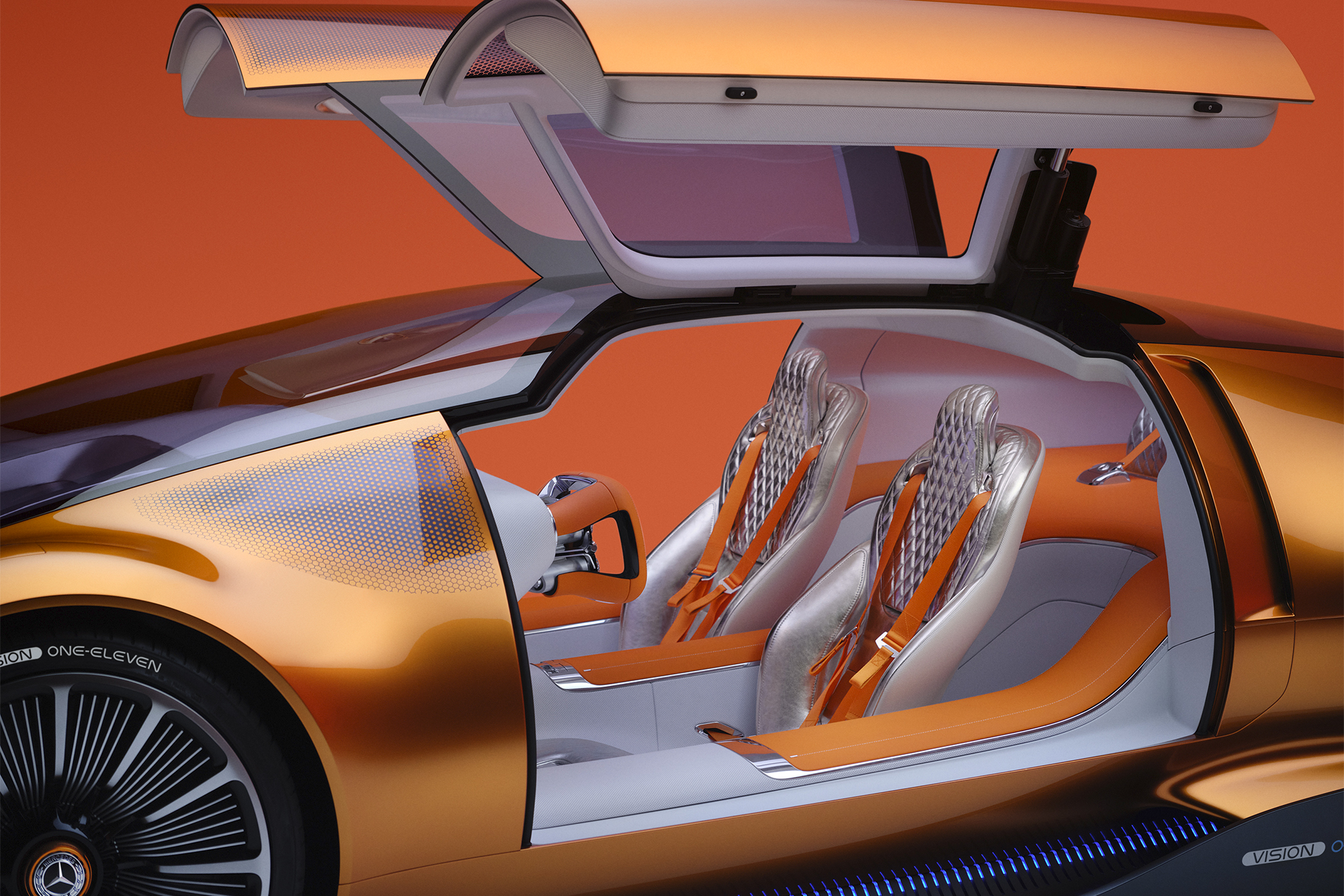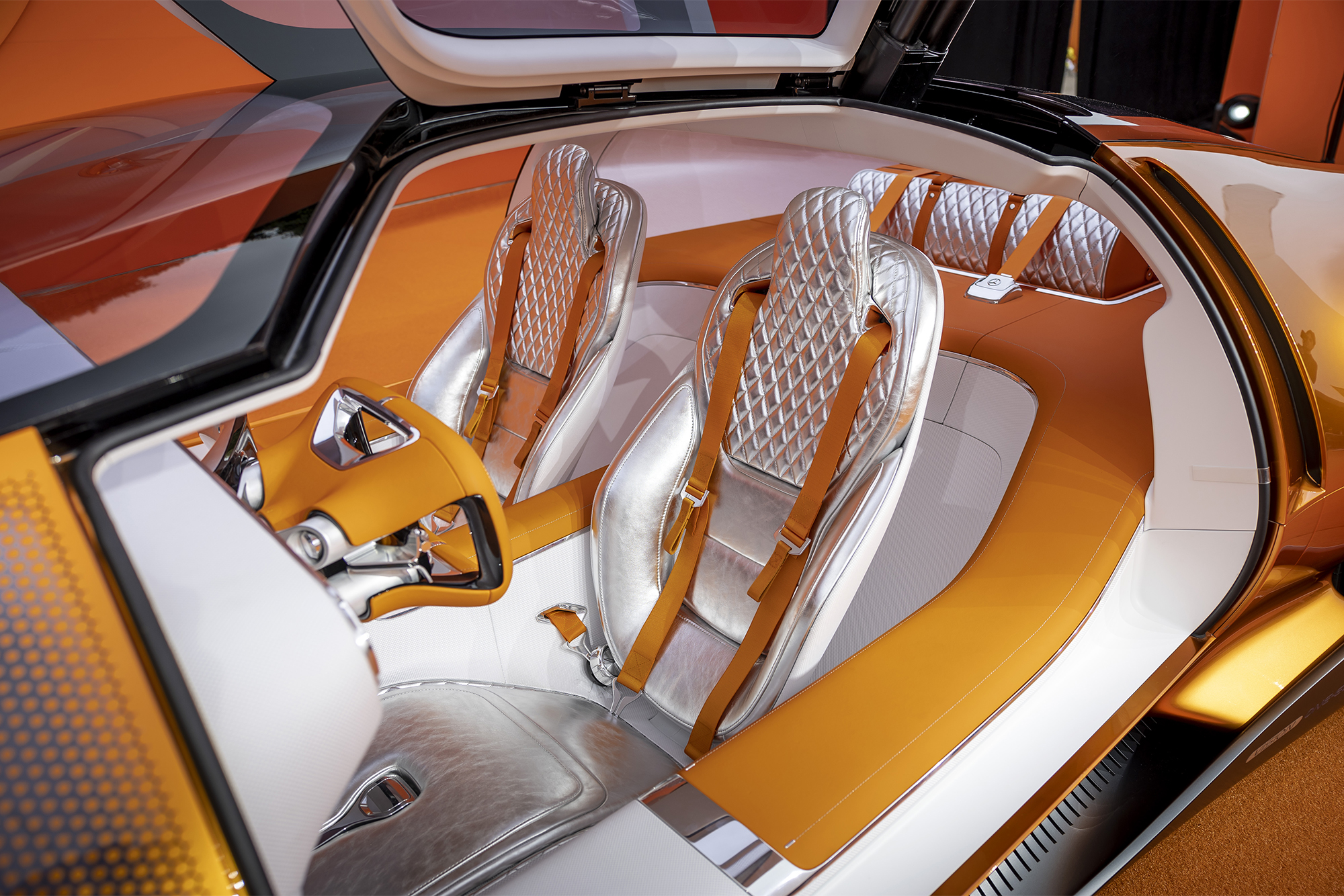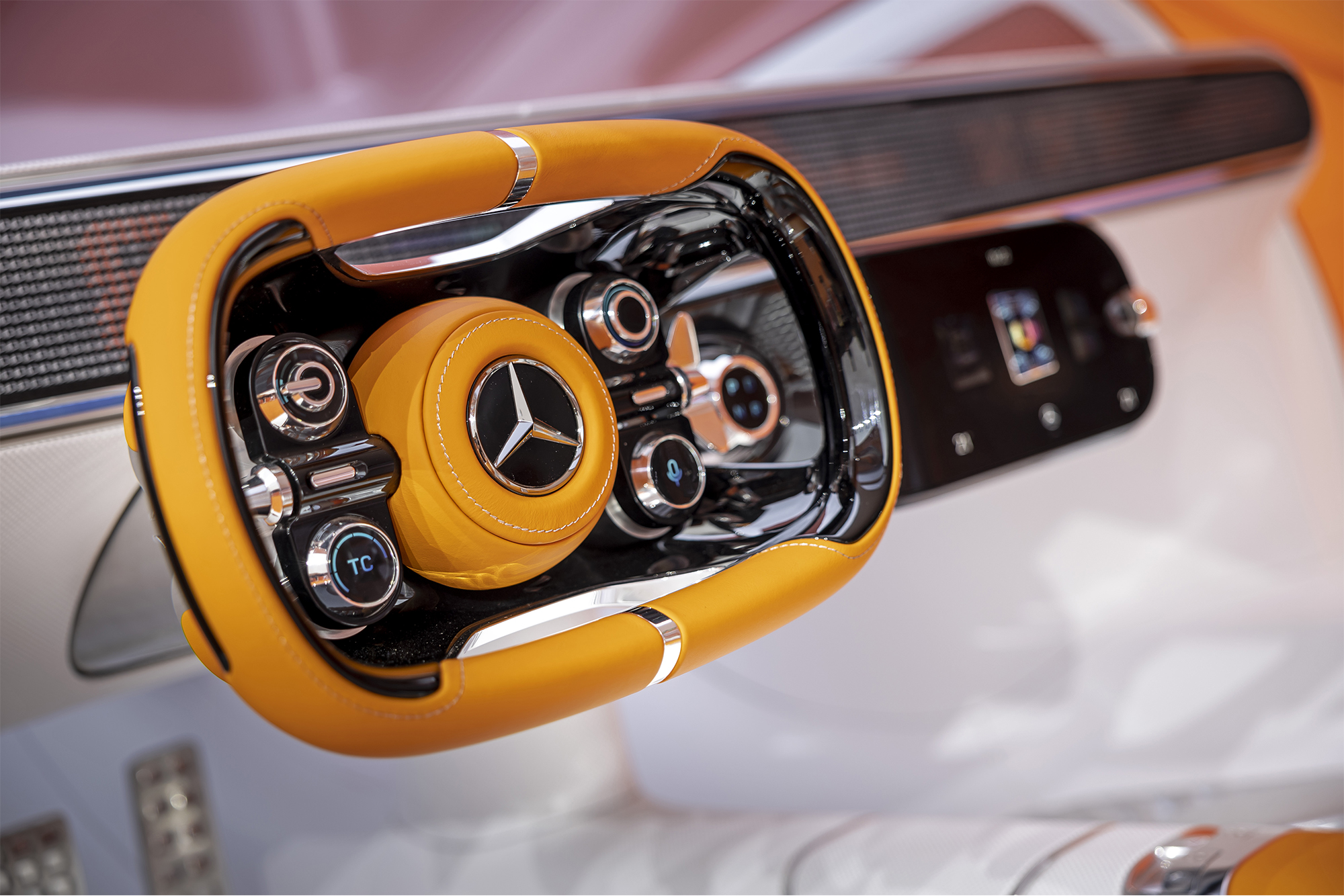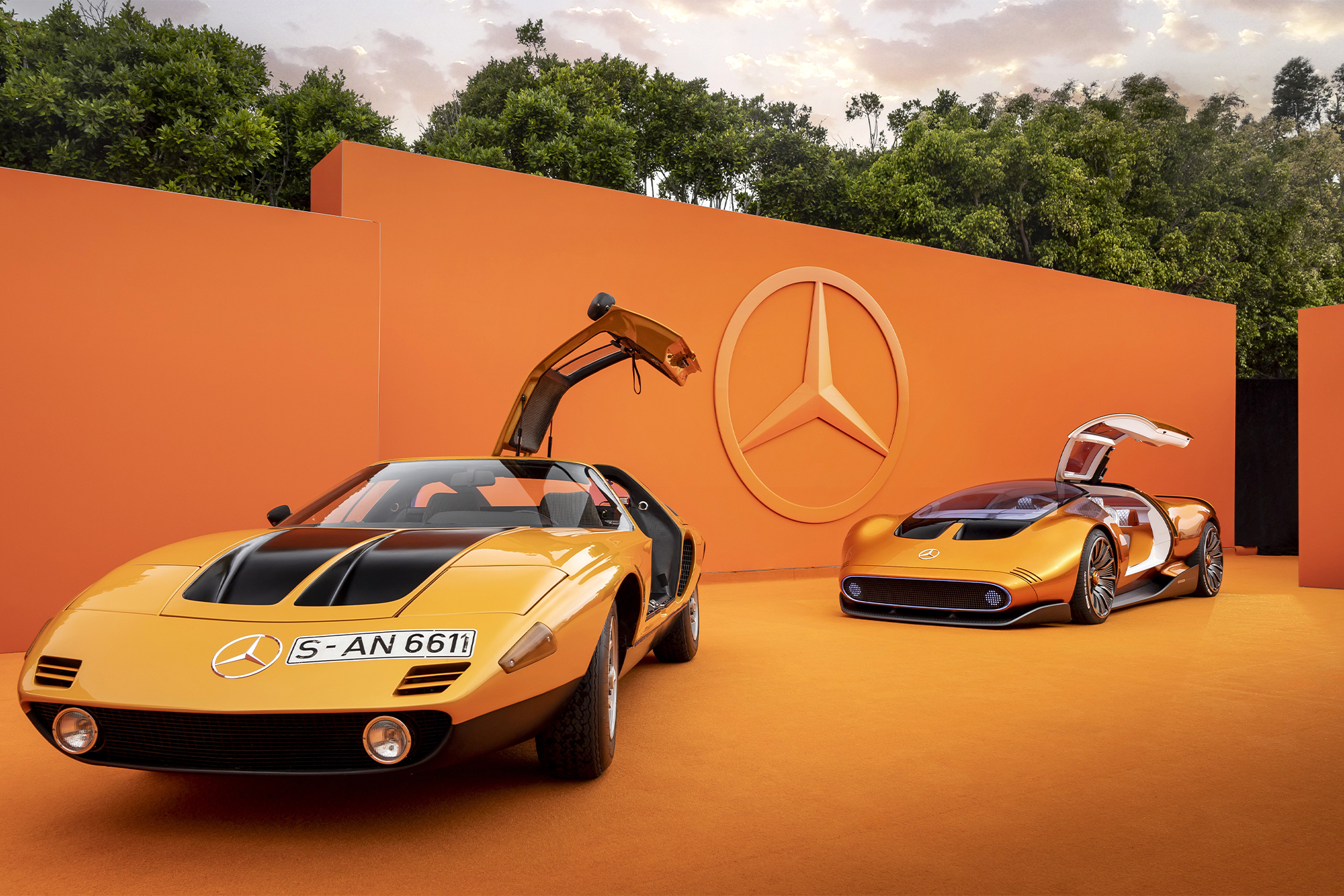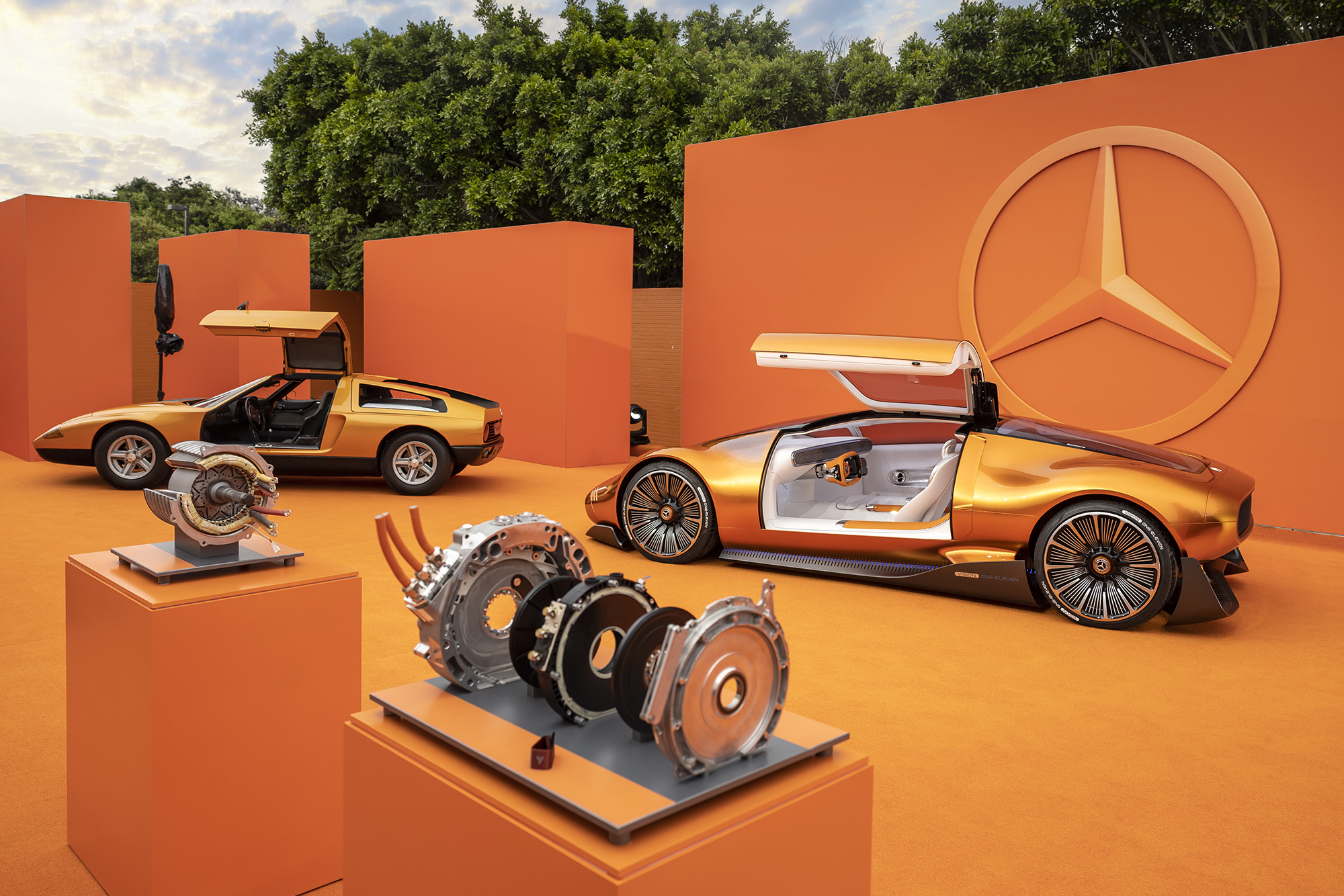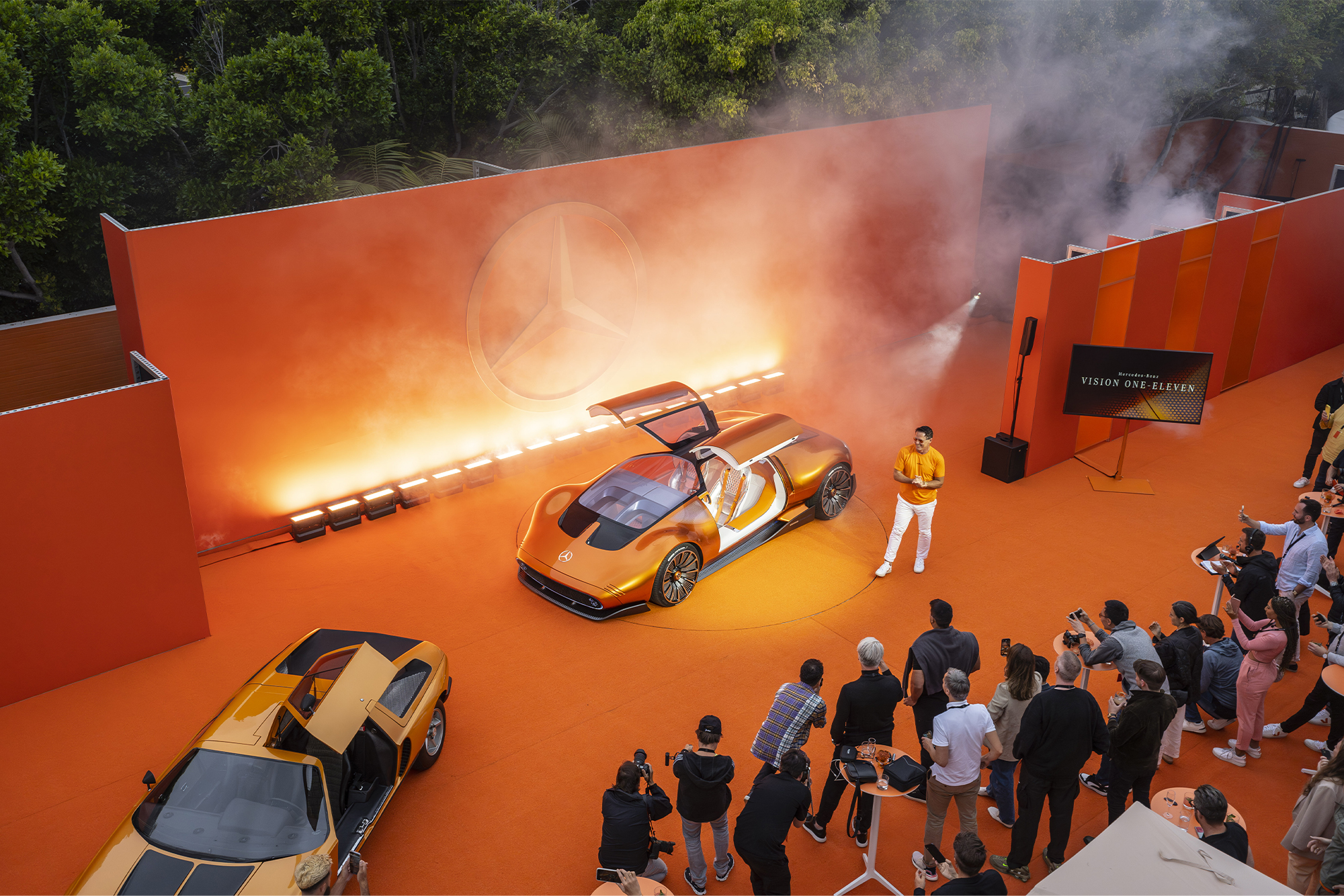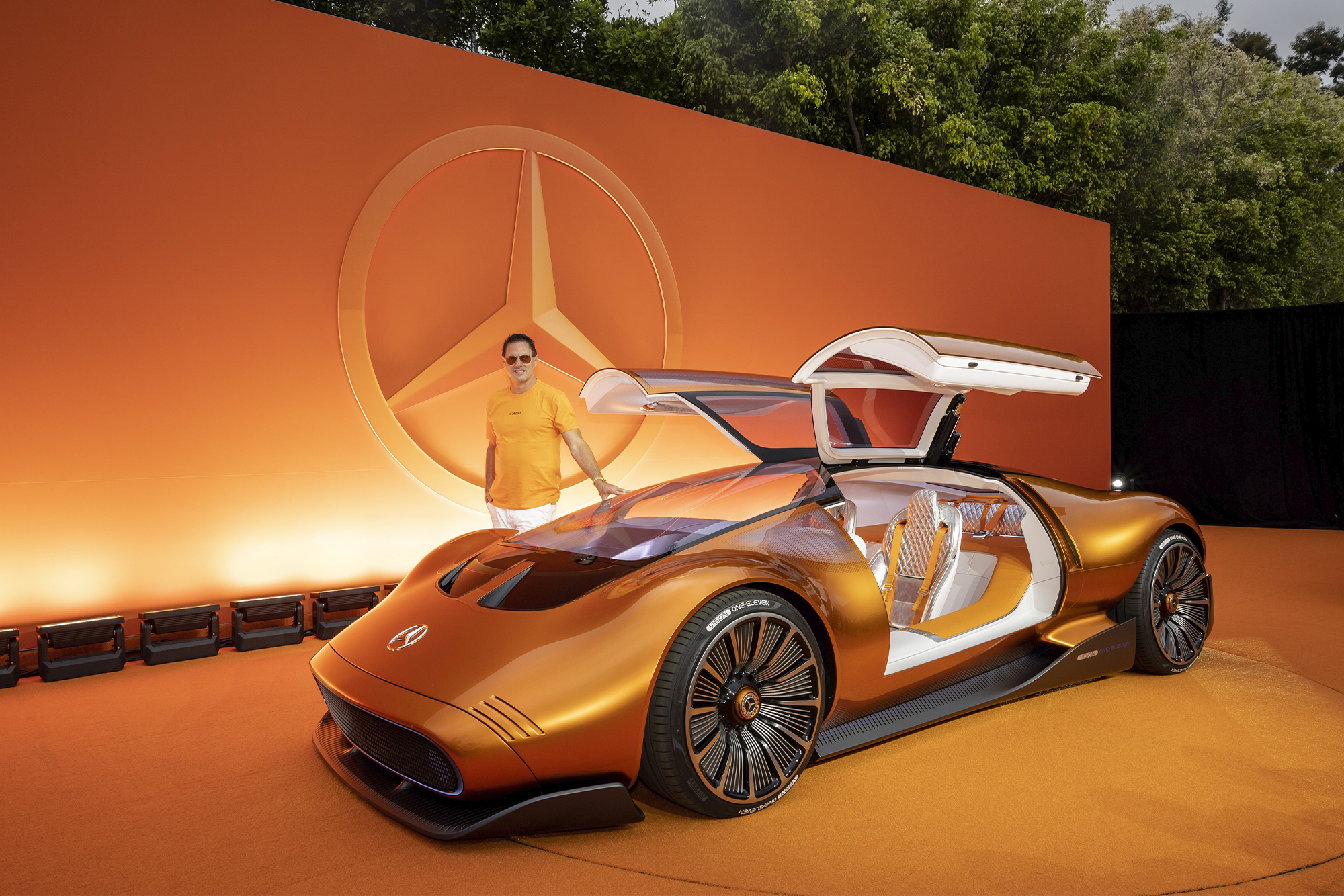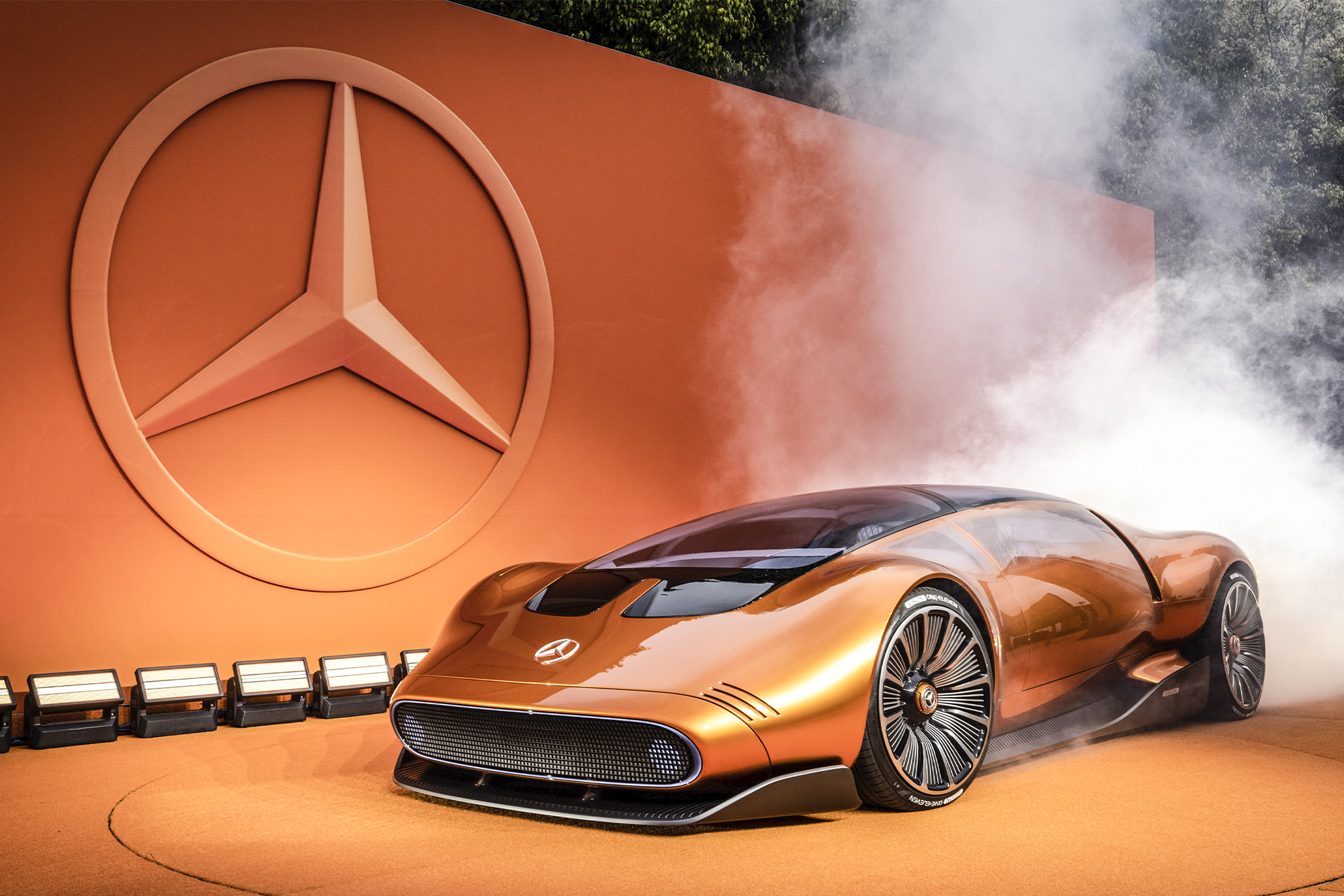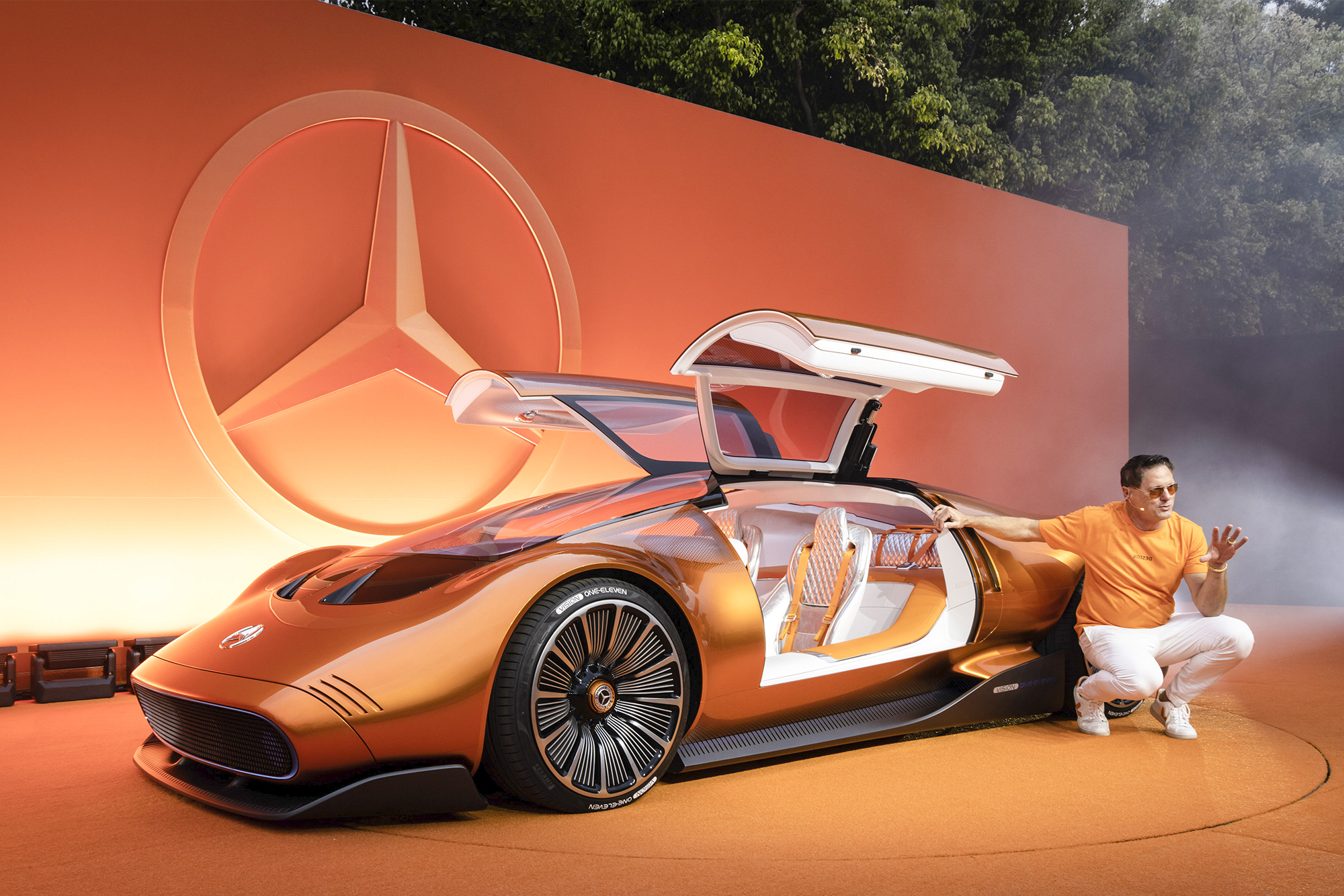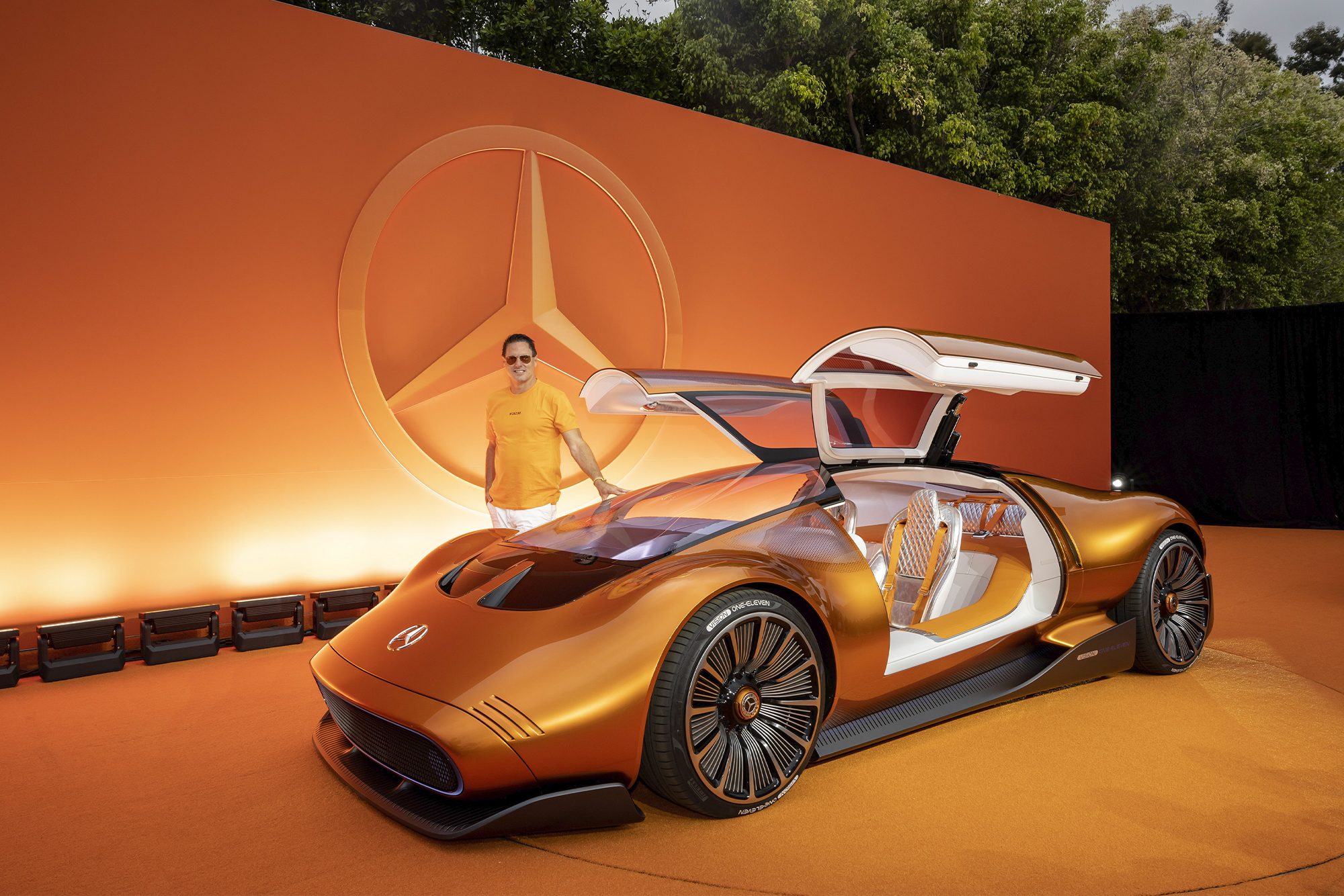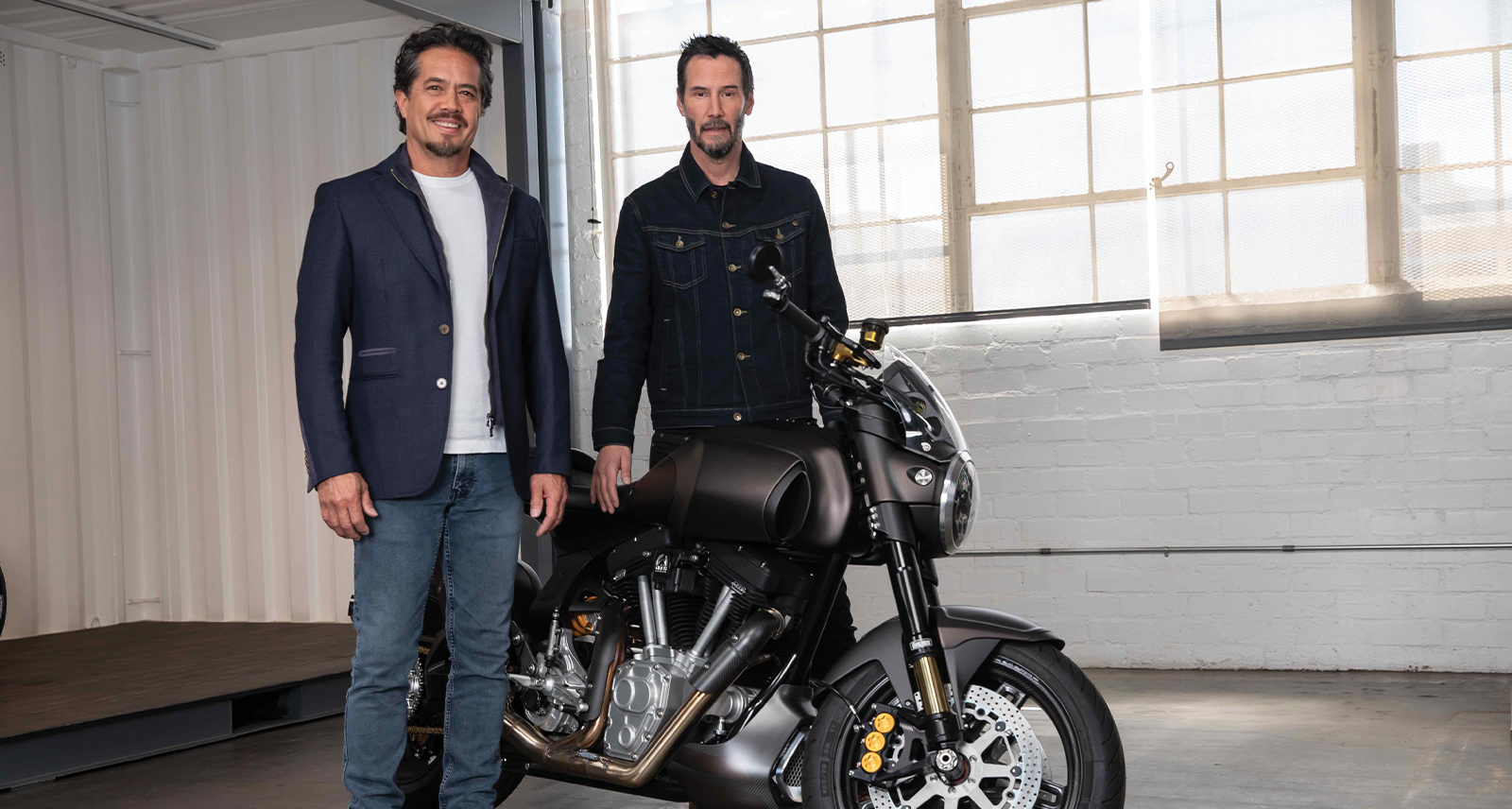Mercedes-Benz’s Chief Design Officer Explains the New Vision One-Eleven Concept Car
There are three types of concept car. At least, that’s what Gorden Wagener, chief designer officer of Mercedes-Benz, tells us. And he should know. Since joining the company in 1997, Wagener has been a commanding presence at the marque’s drawing board, sketching up and rolling out mainstream models including the fifth-generation C-Class, the S-Class and the luxury GLE.
He’s also dreamed up a whole host of mind-bending, body-twisting prototypes — which steers us back to those three concept categories. “First, there are pre-production show cars,” explains Wagener, “which announce a new direction for a production car, one year prior to market. Then, there are the research cars, like our EQXX, which have lots of new technical input. And then, there are the ‘Vision’ cars, which are pretty much brand-shapers; cars that show crazy ideas and creativity.”
These are Wagener’s favourites. “For me,” he says, “they’re like trunk shows in fashion. You can’t buy the clothes, and most of the time you can’t even wear them. They’re just for show — for showing off a new icon for the brand.”
Enter the Vision One-Eleven, Mercedes-Benz’s latest ‘brand-shaper’. Cooked up in Carlsbad, California (where the marque maintains one of its four global ‘Advanced Design Studios’), this space-age, shark-nosed concept was inspired by the experimental ‘C111’ series of cars developed by the brand during the 1960s and 1970s.
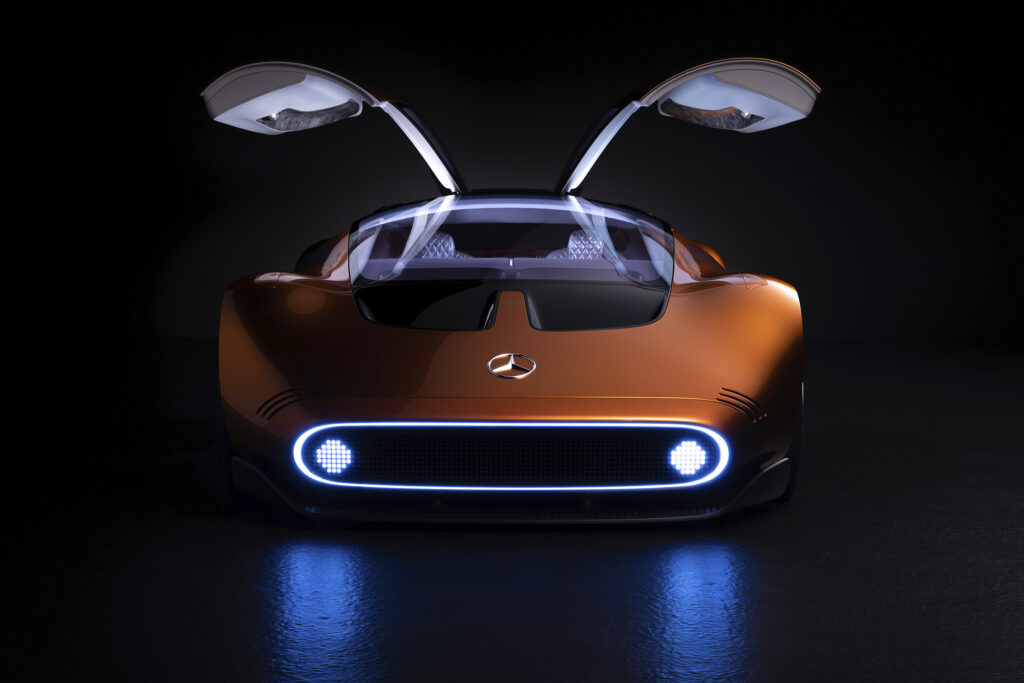
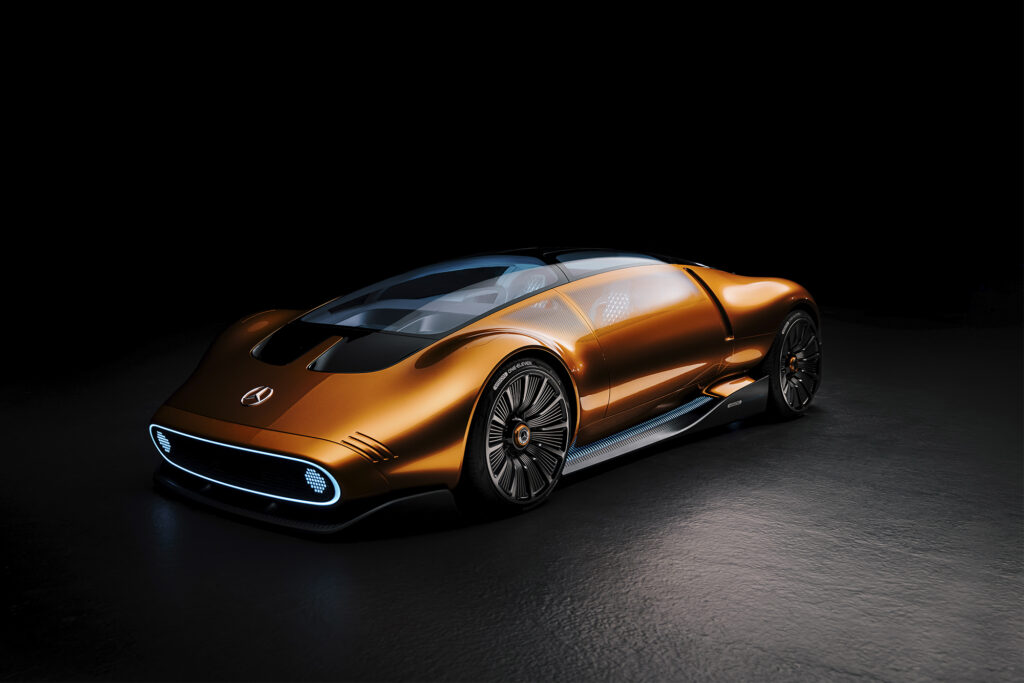
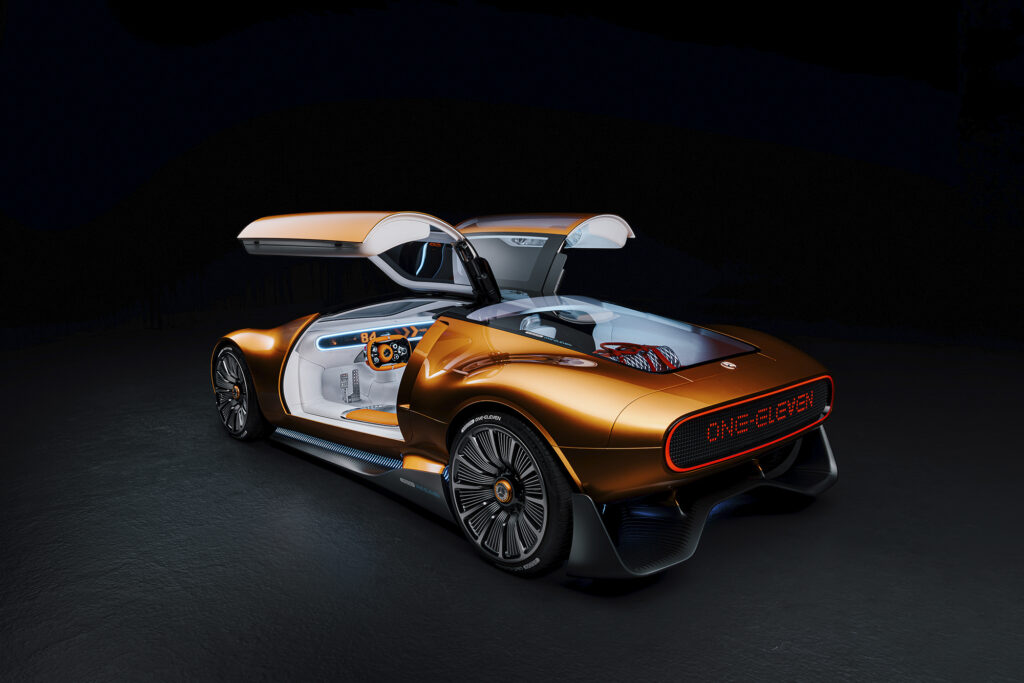
“But you can see that this car is not just a copy,” says Wagener. “It’s inspired by the C111 — but it’s a very modern, contemporary interpretation of that car. It brings it into the future. And this is what we do with everything. We’re always looking back as a source of inspiration.”
The spirit of the first C111, a car launched at the Frankfurt Motor Show over half a century ago, courses through this concept — from its distinctive gull-wing doors to its vivid orange paintwork. The seats are quilted in showy silver leather, a squared-off steering wheel gives a nonchalant nod to Mercedes’ motorsport heritage and the sleek swell of that glass cabin canopy looks to the future.
But our favourite feature? The car’s low-lying, illuminated grille. Interpreting the distinctive round headlights of the original C111 in a uniquely digitised way, the front grille (along with the rear light array and dashboard inside the cabin) achieves a 3D, pixelated appearance by mounting small glass cubes on top of high-resolution screens. You can even program text to scroll across these displays in the 8-bit style of an old news ticker. It’s one of many retro-futuristic touches inspired by the brand’s rich history.
“And we’ve got this great potential,” says Wagener, “because no other brand has our history. When you see mainstream designs these days, they all look pretty much alike. Many electric cars don’t even have a grille, which makes them ‘faceless’, so one looks like the others. They lack identity. But we have that identity.”
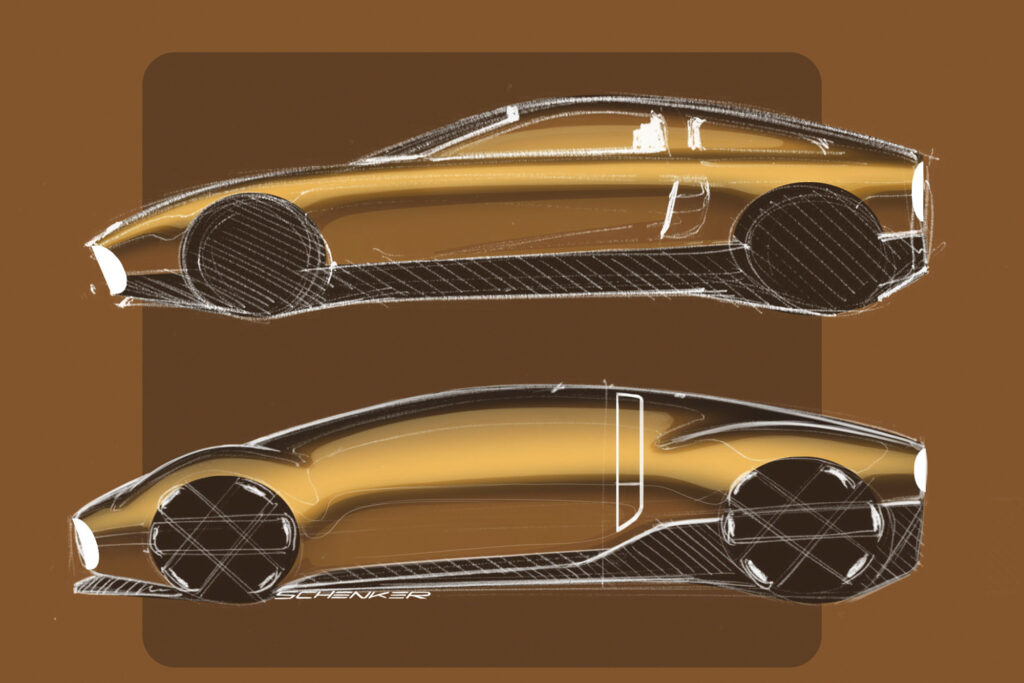
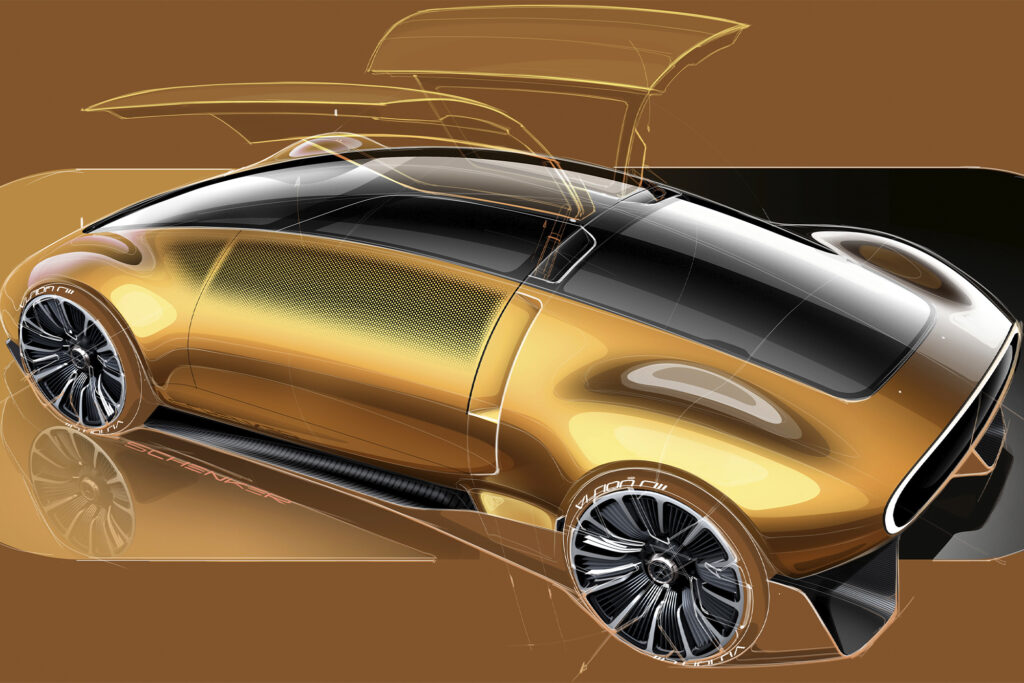
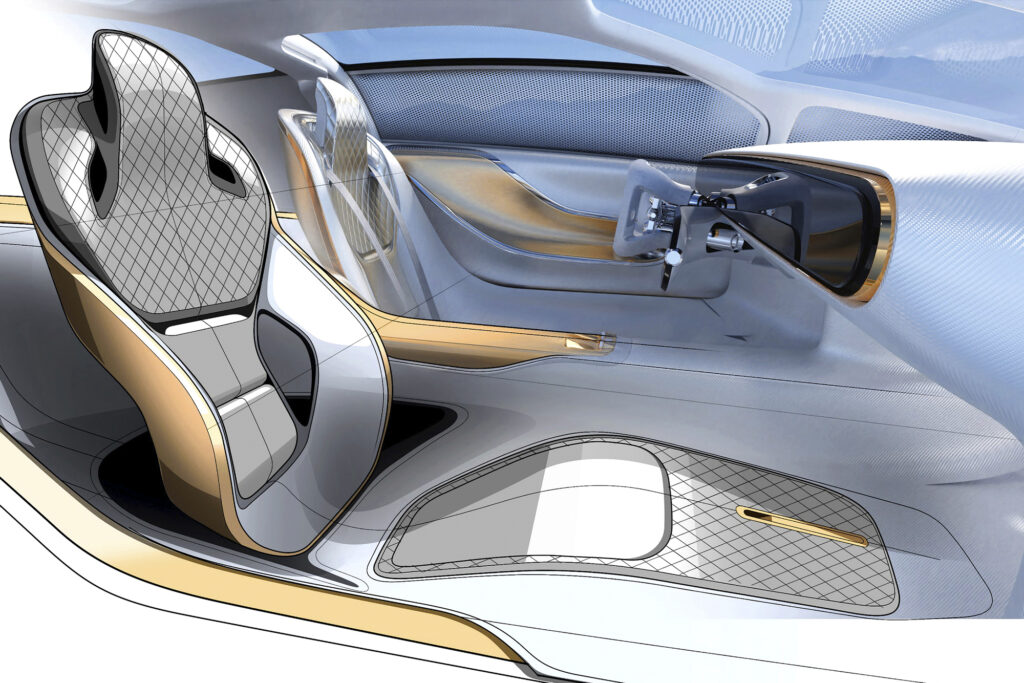
“We take inspiration from something,” he adds, “and make something new and contemporary. But we do it in a retro way, rather than just copy-and-pasting something old into the future. You can see that with the One-Eleven. It’s not the C111, it’s a whole new car. It’s super-modern, super-clean, simple — and we love simplicity.”
Wagener may chase simplicity, but Dr. Tim Woolmer charges in the opposite direction. The founder of YASA Motors and an Oxford-educated engineer, Woolmer has dedicated his entire career to re-envisioning of one of history’s most intricate powertrains: the co-axial flux motor. He overhauled the 200-year-old invention, packing it with more power than ever before, and shrinking it to an ultra-streamlined size. Mercedes noticed, bought YASA out in 2021, and are using the Vision One-Eleven to showcase Woolmer’s world-beating motor.
“In an axial-flux motor,” Woolmer explains, “the electromagnetic flow runs parallel to the motor’s rotational axis, which is highly efficient. Compared to radial-flux motors, which are currently used in 99 percent of all electric cars, they have considerably higher and more enduring power reserves, which delivers a whole new level of performance.”
It’s a significant step forward, and one that ensures the Vision One-Eleven’s future-facing credentials run more than just skin-deep. For Gorden Wagener, the new motor backs up his headline-grabbing designs, and shows that every corner of the company progressing at the same revolutionary rate. But does working with a new powertrain affect how the designer goes about shaping and sculpting his concepts?
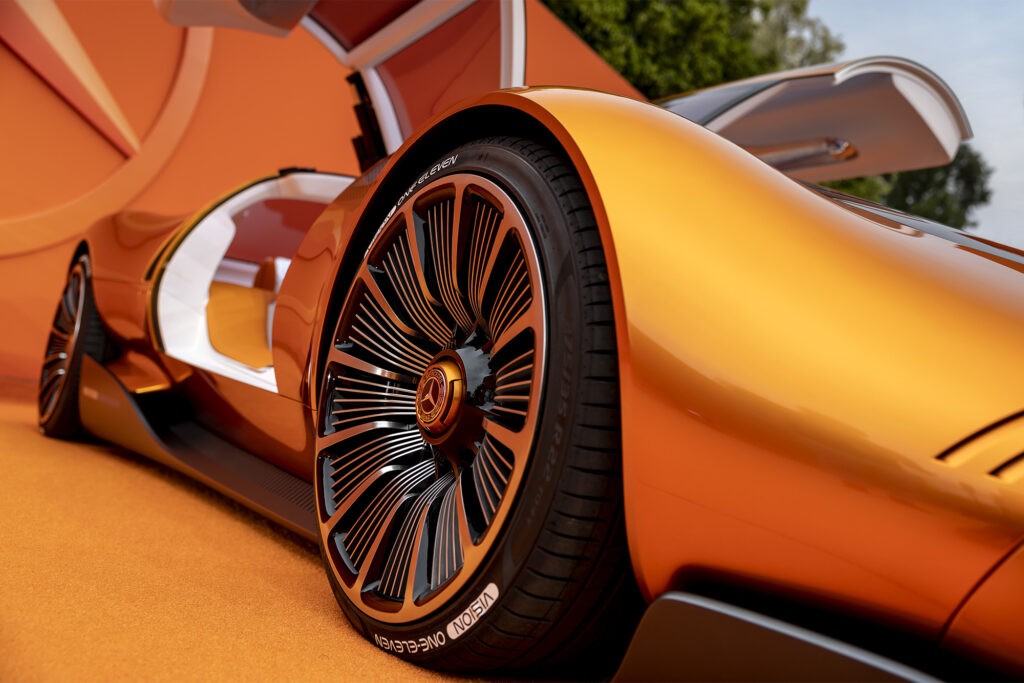
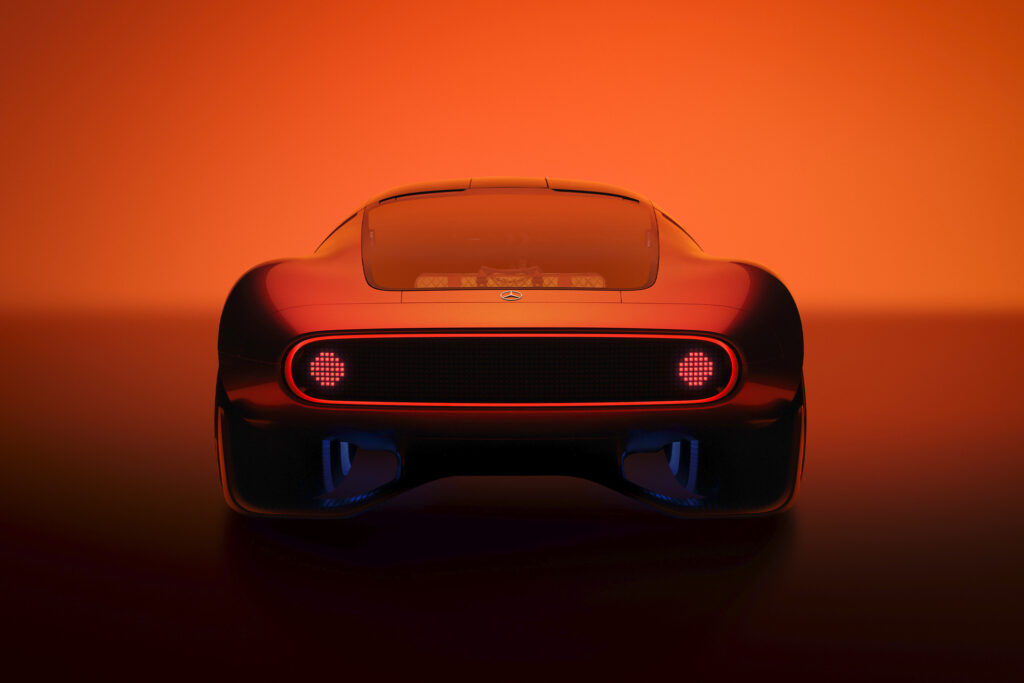
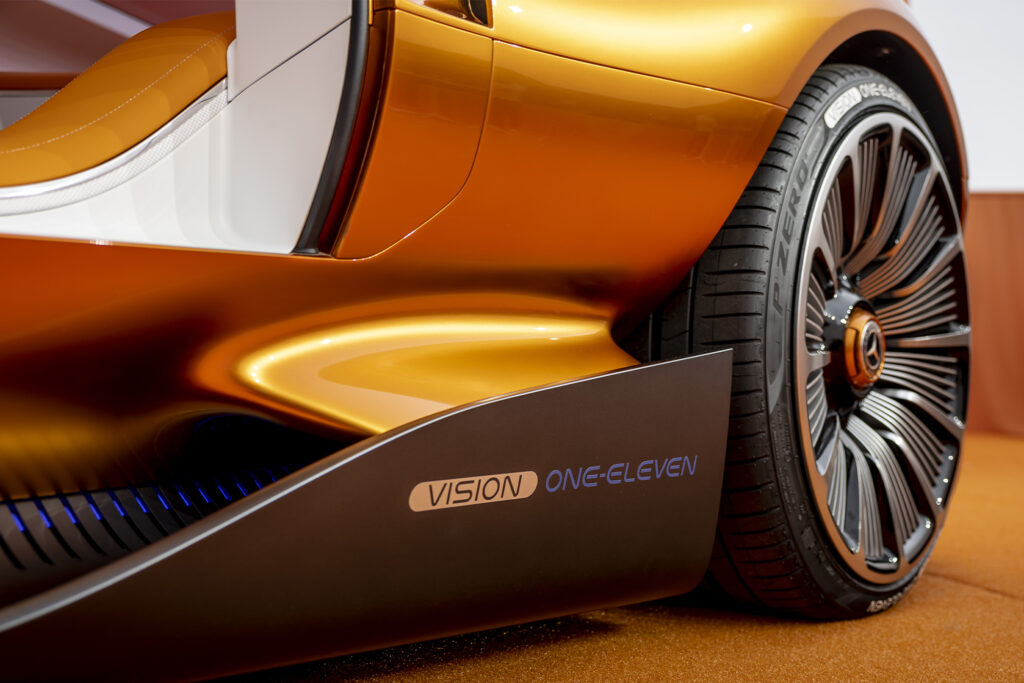
“For me, it’s kind of a chicken-and-egg principle,” says Wagener. “What comes first? The technical layout, or the design vision? Of course, I like to start with design — but that’s not free art. It still must refer to at least some platforms and architectures.”
“Whatever we do,” he adds, “we try to build the house right, get the proportions as good as we can — small overhangs, big wheels. Cabins can’t get too high, especially with electrification and six-inch battery packs that need storing. So, whenever there’s a new architecture, we do these ‘Vision’ models, and work together with engineering to make our dreams come true”.
This latest realised dream, the vibrant Vision One-Eleven, marks a genuine turning point on the Mercedes-Benz road map. It’ll turn heads, sure, but it also signals the mechanical future of the marque — and the potential of those nifty new YASA powertrains. It is, in Wagener’s words, the perfect example of his third (and preferred) concept category; show cars.
“People are just more inspired when you do a show car,” he says. “Because, from a show car, you can create a good production car. But this is step one in that process; trying to create a vision that is more than just a production car. You want to make a statement. You want to make something potentially iconic.”
Learn more about the Mercedes-Benz Vision One-Eleven.
